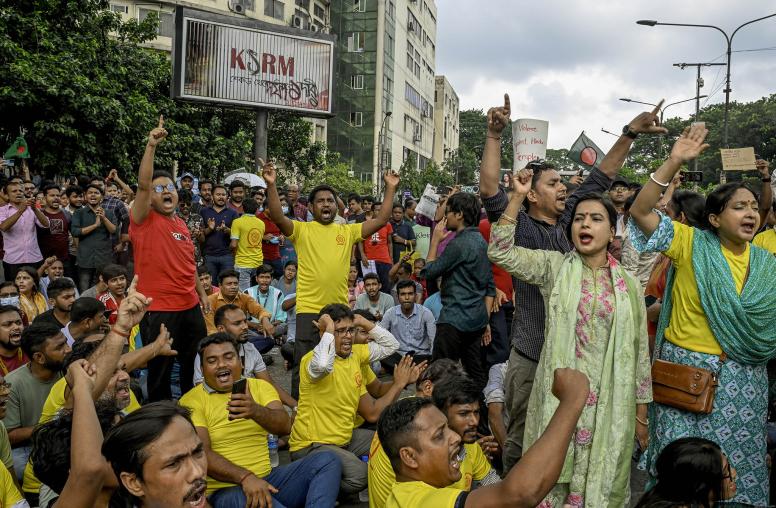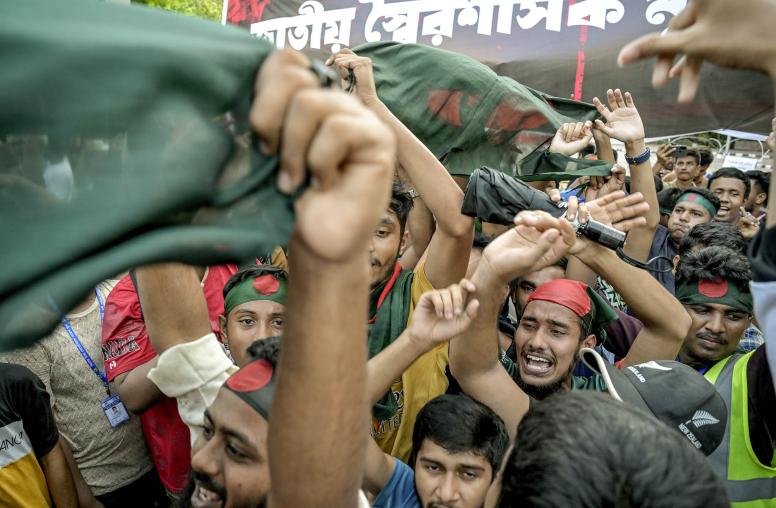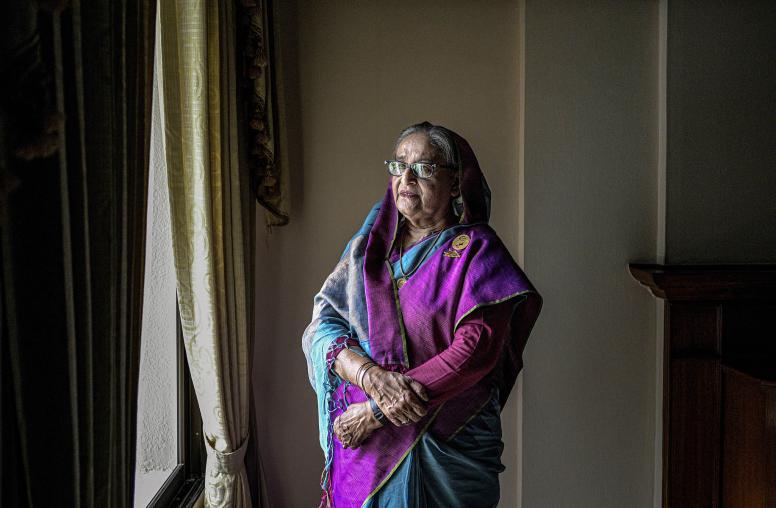The ongoing tension and turmoil in Haiti, Uganda, and Macedonia once again demonstrate the complex relationship between elections, democratic stability and peace. Peaceful elections help create the foundation for stable political transitions. But in poorly governed states, elections often trigger violence and intimidation.
Over the years election violence has gained prominence within the broader fields of peace and security studies. Much of the literature looks at the drivers, triggers, perpetrators and victims of violence surrounding elections. At the same time, domestic and international actors remain surprisingly ill-equipped to evaluate and prioritize efforts to prevent election violence. Dedicated research can certainly help address this gap.
“Prevention seems to pay off; but the choice among available practice and instruments needs to be made strategically.” – Jonas Claes, USIP senior program officer
Targeted peacebuilding efforts are frequently used to prevent election violence. Practitioners possess a variety of programming options or interventions, including peace messaging campaigns, preventive diplomacy, dedicated youth programs or monitoring missions.
But the ability of election violence prevention to achieve its intended outcome merits further investigation. What works, what does not, and under which conditions? The choice among preventive measures is often made intuitively or impulsively, rather than based on empirical evidence, risk assessments or thorough practice evaluations. Commonly the practice selection is driven by the mandate of the implementing actors, or their familiarity with a given preventive approach. For example, if small NGOs develop a reputation around youth programming, they will make a case for it regardless of whether it matters in a given context or not.
USIP recently concluded an ambitious study to assess whether prevalent intervention models demonstrate a measurable impact on electoral violence. Such evaluations expand our knowledge base, and help practitioners prioritize the most appropriate and cost-effective prevention tool in a given context.
Five recent elections were carefully selected for this practice evaluation: Bangladesh, Honduras, Malawi, Moldova and Thailand. Each displayed similar levels of risk, but experienced very different levels of violence. So, did prevention make the difference? Or was it the context that explains this variation?
The findings present compelling evidence that prevention works. Thailand and Bangladesh, where prevention was minimal or absent, experienced high levels of election violence. Moldova and Malawi saw minimal levels of violence, but intense prevention activity. Historic comparison further supports this finding: The 2013 election in Bangladesh, in which little effort were made to prevent electoral violence, was marred by historically high levels of violence. Previous Bangladeshi elections saw more prevention activity, resulting in lower levels of electoral violence. In Thailand, prevention was similarly weak during the 2014 election cycle, yet the polls saw unprecedented levels of intimidation and fear.
All Prevention Isn’t Equal
Even though some electoral violence prevention strategies seem to work well in reducing overall levels of violence, all prevention practices are not equally promising. The quality and scope of some available instruments, including security sector engagement (i.e. the presence of security forces at key elections events, and the existing regulatory frameworks structuring their operation) and efforts to adequately administer the elections, correspond strongly with declines in the intensity of election violence.
Weak security sectors in Bangladesh and Thailand contribute to violence, whereas effective security provision mitigated the risk of violence in Malawi and Moldova. This demonstrates that states have important roles to play in preventing electoral violence. A well-trained and disciplined security sector, coupled with an institutionalized, legitimate and effective electoral administration body, tend to create the largest reductions in election related violence, according to our research.
Among those prevention tools available to international actors and local civil society, election monitoring and civic education stood out as the most promising. The measurable impact of peace messaging, voter consultations and youth programming remains small or unclear. All three of these are all citizen or voter-oriented instruments that are commonly—but not exclusively—led by domestic NGOs. In our analysis, the objectives of these instruments are too ambitious: These are short-term engagements, with ambitious long-term objectives, i.e. to change voter attitude and behavior in 3 or 4 months.
The use of election monitoring missions, one of the most promising tools available to international actors engaging in electoral violence prevention, highlights the potential competition between free and fair elections, on the one hand, and election violence prevention, as strategic objectives. Peace and fairness may reinforce each other, but this is not always the case. Most international practitioners emphasize the technical quality of the electoral process, and seem less concerned with outbreaks of widespread violence. Many monitoring missions will withdraw from an election in the anticipation of widespread fraud, repression, and violence, in order not to legitimize illegitimate elections. The impact on election violence, at times, is overlooked in such situations.
Prevention seems to pay off; but the choice among available practice and instruments needs to be made strategically. Short-term activities may help manage crises around election day; long-term investments in the state capacity to administer the polls and provide adequate election security present a more evidence-based approach to address the risk of violence across election cycles.
The full findings of this research will be published in a forthcoming volume entitled Electing Peace: Violence Prevention and Impact at the Polls, published by U.S. Institute of Peace Press.
Jonas Claes is a senior program officer at USIP, conducting research and analysis on the prevention of electoral violence and mass atrocities. Reposted with permission from the web site of The Project on Explaining and Mitigating Electoral Violence, Source: “Electing Peace: What Works in Preventing Election Violence."



